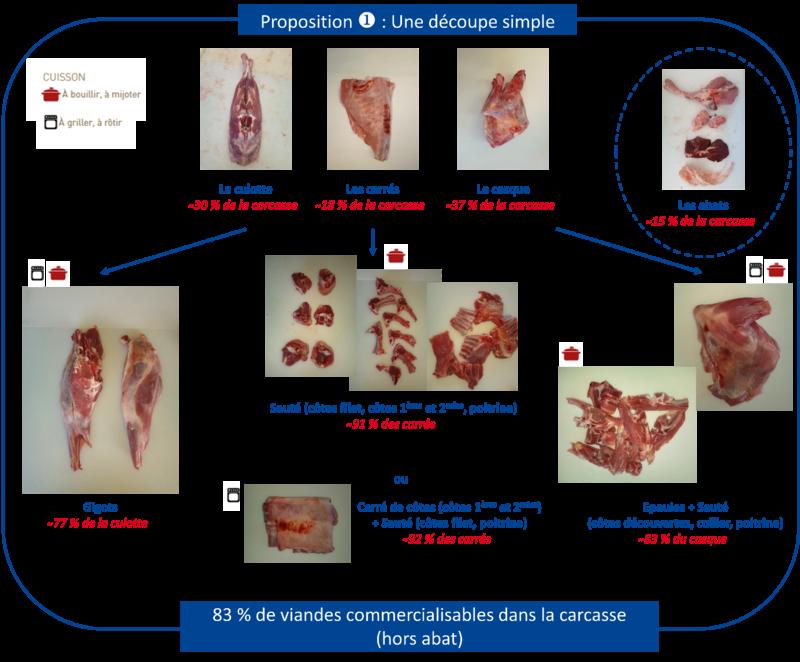ValCabri collects data on kid meat
Three and a half years. This is the time frame that the goat industry has given itself to draw up a picture of goat fattening on the farm. To achieve this, the goat meat interprofession – Interbev caprin – and the Livestock Institute have launched the Valcabri project. In particular, this provides for three technical trials, which take place at the Pradel experimental goat farm in Ardèche: the diet of mothers at the end of gestation, the choice of milk replacer for the kids and the crossing with breeds with meat. The experiment concerning milk replacer for kids took place in January and February 2020. Three feeds were in the running: raw breast milk and two reconstituted milks enriched with omega 3, one containing 65% skimmed milk (PLE) and the other without it. These two milks are part of the range of the manufacturer Bonilait.
Between 12.5 and 35 euros of breastfeeding per kid
The kids are born on average at 4.7 kg and were slaughtered at the age of 24 days for a live weight of 10 kg. The growth of the kids was similar with 210 grams per day of ADG regardless of the feed received.
The addition of powder had no impact on growth and carcass quality of kids. However, kids fed 0% skimmed milk powder have a higher consumption than those fed 65% skimmed milk powder (7.8 kg vs. 6.2 kg of powder per kid) but the cost of feed is less expensive (€14.50 vs. €17 per kid, i.e. a difference of €2 to €3 depending on the price per ton of products).

With regard to breast milk, the kids consumed a total of 37.7 liters (including 20 liters of post-colostral milk), or 1.5 liters per day on average. The cost of feeding goats fed on mother's milk varies according to the share of colostral milk provided. In the case of our trial where all the milk is not post-colostral, the feed cost varies from 12.50 euros if the milk is delivered to the cooperative to 35 euros if the milk is transformed on the farm into Picodon PDO.
With breast milk, less fatty carcasses
In this trial, the carcasses of kids reared on mother's milk are slightly less fatty and have a lighter color. This is in line with the expectations of consumers who want white meat for this type of product. The sensory qualities of the meat, analyzed in the laboratory by a jury of experts, are not different between the three breastfeeding methods. Light goat meat has a relatively weak taste and has no major tenderness problem.
In addition, it has nutritional advantages: kid is a lean meat (lipid content of 1.3 g/100 g of meat), rich in protein (20.6%), iron (0.9 mg/ 100 g), zinc (2.5 mg/100 g) and vitamin B12 (0.6 µg/100 g). For the latter, a difference between the three batches was observed: the meat of the kids receiving the feed with 0% skimmed milk powder showed higher levels (0.9 µg/100 g) than those of the other two batches ( 0.5 µg/100 g), in connection with vitamin B12 supplementation of this food.
Goat meat of better nutritional quality
The presence of omega 3 in milk replacers tends to improve the nutritional quality of meat. The omega 6/omega 3 ratios are significantly improved, reaching the value of 11, compared to 90 for the ratios from the ValCabri 2019 trial. A ratio of the same order is also observed for breast milk where there is no addition of omega 3. Alfalfa and the concentrate (based on rapeseed) distributed to goats are however natural sources of omega 3 and may explain this result. The target value recommended by ANSES for a balanced food is 5.
Additional information on idele.fr/reseaux-et-partnerships/cappradel







